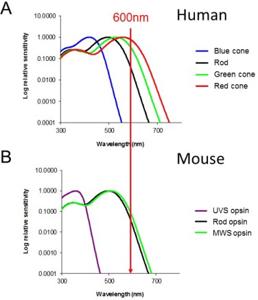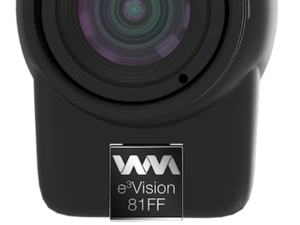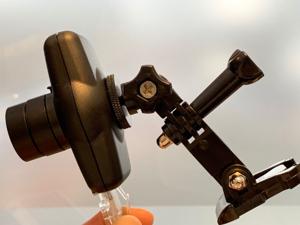Camera unit
e3Vision camera unit
Each e3Vision camera captures video oriented with the ethernet port label down (ethernet cable at the bottom of the camera unit). The video can be rotated 180° using software controls.
Each camera unit is labeled with its serial number, which also forms part of its Layer 2 MAC address. For more information and usage, see the software MAC address details.
Camera mounting
Each camera is provided with a GoPro-style mount with a tripod (¼"-20) bolt of the appropriate length, which makes it compatible with a large number of very low cost third party clip, clamp, adhesive, bolt, strap solutions that can attach to virtually anything. You may find a large variety of very low cost third-party solutions on Amazon or eBay.
e3Vision optics
The camera system has a ¼"-format camera sensor and a kit lens with 4.0mm focal length, and can be used with any C- or CS-mount lens. (C-mount lens require an adapter.)
Near-infrared spectrum illumination
e3Vision camera sensors have sensitive to both visible and NIR, with no built-in filters. Our stock camera lens also passes both visible and NIR. If dedicated NIR or dedicated visible is needed, IR-cut or IR-pass lenses can be used, or third-party filters may be incorporated on the stock lens at a very low cost.
Many third-party options for security camera illumination are available at very low prices.
NIR spectrum sensitivity
A good heuristic is that the cameras are ~3x as sensitive to visible light as to 850nm light, and ~3x as sensitive to 850nm as compared to 940nm illumination. As a result, 850nm illumination usually provides superior camera exposure.
Furthermore, if 850nm near-infrared illumination is acceptable to the experimental paradigm, we recommend this spectrum as it usually requires minimal if any refocusing from visible in day/night usage.
One drawback of 850nm illumination is that it is very slightly visible to primates (but not mice), and a very bright 850nm light source may present as a very dim red glow when viewed directly. This may not be appropriate for all experimental paradigms. 940nm illumination is not considered perceptible to both primate and rodent subjects.

Sensitivity curves from Peirson et al. 2017)

